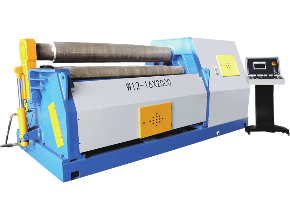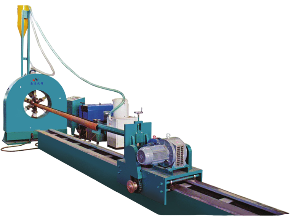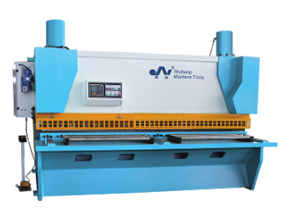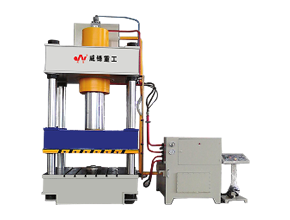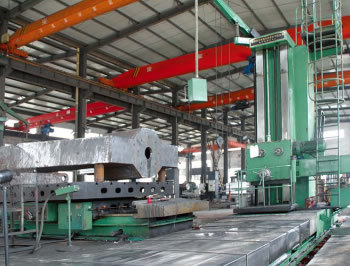Notes on the use of CNC sheet metal bending machine
Precautions for using CNC sheet metal bending machine:
Phenomenon 1: Non single power source
Some CNC bending machine equipment adds some mechanisms, but due to the convenience of wiring or the association with other equipment, the power supply of the newly added mechanisms is not led from below the power cut-off switch of the equipment, but from another wire, which violates the standard regulation of "connecting mechanical and electrical equipment to a single power source" (GB/T5226.1-5.1). In case of emergency, cutting off the power switch on the equipment does not cut off all power to the equipment, which is a potential hazard to personnel.
Phenomenon 2: Randomly connecting neutral wires to PE
Taking the national standard GB/T5226.1 in China as an example, section 5.1 clearly stipulates that "within electrical equipment, the neutral line and protective grounding circuit should not be connected. PEN dual-use terminals should also not be used inside mechanical electrical cabinets." We have encountered more than one case of a modified machine tool that required an AC220V power supply due to the addition of components. One phase of the three-phase 380V phase was directly connected to the PE grounding terminal of the machine tool to form AC220V, and after adding three-phase electrical components, the neutral line led out was connected to the PE terminal. Obviously, if a device is disconnected due to mechanical failure, it becomes a charged body with a voltage of 220VAC to ground. At this point, the equipment can cause direct electric shock injury to personnel.
In general, according to national standards, manufacturers of CNC bending machine tools can only use neutral wires with the user's consent. The content of the metal processing WeChat is good and worth paying attention to. When using neutral wires, they should be clearly stated in the technical documents of the machinery (installation diagram and circuit diagram), and single insulated terminals marked with N should be provided for the neutral wires. Therefore, when renovating the machine tool, it is not advisable to randomly connect neutral wires to PE to save time and ensure the safety of production and maintenance personnel.
Phenomenon 3: Insufficient protection of electrical equipment
According to the national standard GB/T5226.1, thermal protection measures are required for motors of 0.5kw and above that operate continuously. The failure of heat accumulation in electric motors is an important cause of motor burnout. In the process of machine tool equipment renovation, the use of "time current" protection devices that do not match the electric motor often fails to provide effective protection when there is a significant difference in the time constant between the protection device and the winding of the protected device. We often encounter problems in the maintenance and renovation of machine tools in practical work.
Phenomenon 4: Insufficient protection level of electrical cabinet
We were once commissioned to carry out the acceptance inspection of a certain equipment after renovation. The electrical cabinet of the equipment is over one person high (about 1800mm), with a single door width of about 800mm and no door switch. Anyone can open the cabinet door and enter the interior of the cabinet without using any tools. The protection level of the components inside the electrical cabinet is IP1.1. Obviously, the electrical cabinet structure of the equipment violates the following provisions in GB/T5226.1-6.2.1: "Only under one of the following conditions is it allowed to open the protective shell (i.e. door opening, cover, cover plate, etc.): a) The protective shell must be opened by skilled technicians or trainees using keys or tools, and it may not be suitable to open the electrical equipment during operation.
b) Cut off the live parts inside the protective shell before opening it; This technical requirement can be achieved by a interlocking mechanism between the door and a disconnect switch (such as a power disconnect switch), so that the door can only be opened after the disconnect switch is turned on, and the switch can only be turned on after the door is closed. c) Only when the protection level against direct electric shock of all live parts is at least IP2X or IPXXB (see IEC529), is it allowed to open the protective shell without keys or tools and without cutting off the live parts The WeChat account for metal processing has good content and is worth paying attention to. Therefore, the protection level of the electrical cabinet of the equipment is far from reaching "only allowing skilled technicians to enter and complying with special technical requirements (IEC364-4-41IEC-4-47IEC439-1)." The safety hazards buried in this can be imagined.
The ventilation of electrical cabinets for CNC bending machines and other equipment has long been recognized internationally as the "positive pressure" method, but it has not been implemented in some machine tool renovations. We once encountered a domestic machine tool that used negative pressure ventilation, and the cutting fluid on its tool holder entered the electrical cabinet along the snake skin hose. Moisture in the cable trench, dust during cutting, and so on all enter the electrical cabinet through various channels and gaps. The machine tool has been in use for about a year, and there is a layer of dirt and obvious traces of water vapor (condensation) on the circuit board and various electrical components inside the electrical cabinet. The frequent malfunctions of the machine tool have affected the normal operation of production. In GB5226.1-13.3, it is explicitly stipulated that "the enclosure of the control device should generally have a protection level not lower than IP54 (see IEC529)." From this, it can be seen that failure to comply with the standard must result in consequences.
Phenomenon 5: Incomplete safety operation protection function
When equipment with splashing hazards does not have a protective door interlock function, and it is necessary to confirm that the operator's hands have left the danger zone before they can move, there is no dual hand control method. When the lack of phase causes electrical appliances to burn out without setting up three-phase interlocking circuit breakers and using separate three-way fuses, it directly poses a threat to personnel and property.
Phenomenon 6: Hidden dangers in control lines
As is well known, for signals related to personnel and equipment safety, such as emergency stop signals, overtravel signals, alarm signals, etc., they should be "stopped by cutting off the power" and "cut off all the energized wires of the controlled devices" (GB/T5226.1-9.4.2.1). We once encountered a CNC bending machine designed and modified by a private enterprise. The limit stroke switch used a normally open contact, which means that when the machine tool does not overtravel and works normally, the circuit is "disconnected" (low level). When the moving parts overtravel and press the stroke switch, the circuit is closed (high level). During the debugging process of the machine tool, the maintenance personnel measured the circuit and unplugged the connected plug, but failed to plug it in in time. As a result, during the test drive, The circuit was always in a normally open state, and the controller confirmed that the machine tool was "normal", resulting in the damage of the screw support bearing seat. It can be imagined that if the motion drag chain line is disconnected due to mechanical reasons during user use, who should bear the property damage or personal injury caused?
The grounding of one side of the relay coil in the control circuit has long been considered an effective safety measure to avoid fault misoperation. However, in some modified machine tool equipment, it is common to have control contacts on both sides of the relay coil or to connect one end to the power supply and the other end to the contact point. Due to the wiring running on and off the machine tool equipment, if there is a short circuit to ground due to mechanical wear and insulation failure, and the relay malfunctions, the consequences would be unimaginable. The WeChat account for metal processing has good content and is worth paying attention to. It is worth mentioning that some electrical renovation designers often design the control output terminal as a collector open circuit to directly drive the relay line diagram for the sake of convenience, but at the same time, it also poses a hidden danger of accidents.
Phenomenon 7: Incomplete warning signs
Some modified machine tool equipment failed to provide corresponding warning signs in accordance with the requirements of GB5226.1-18.2. Often, there is no clear explanation in the modified technical documents, and only verbal warnings are given to operators during training.


